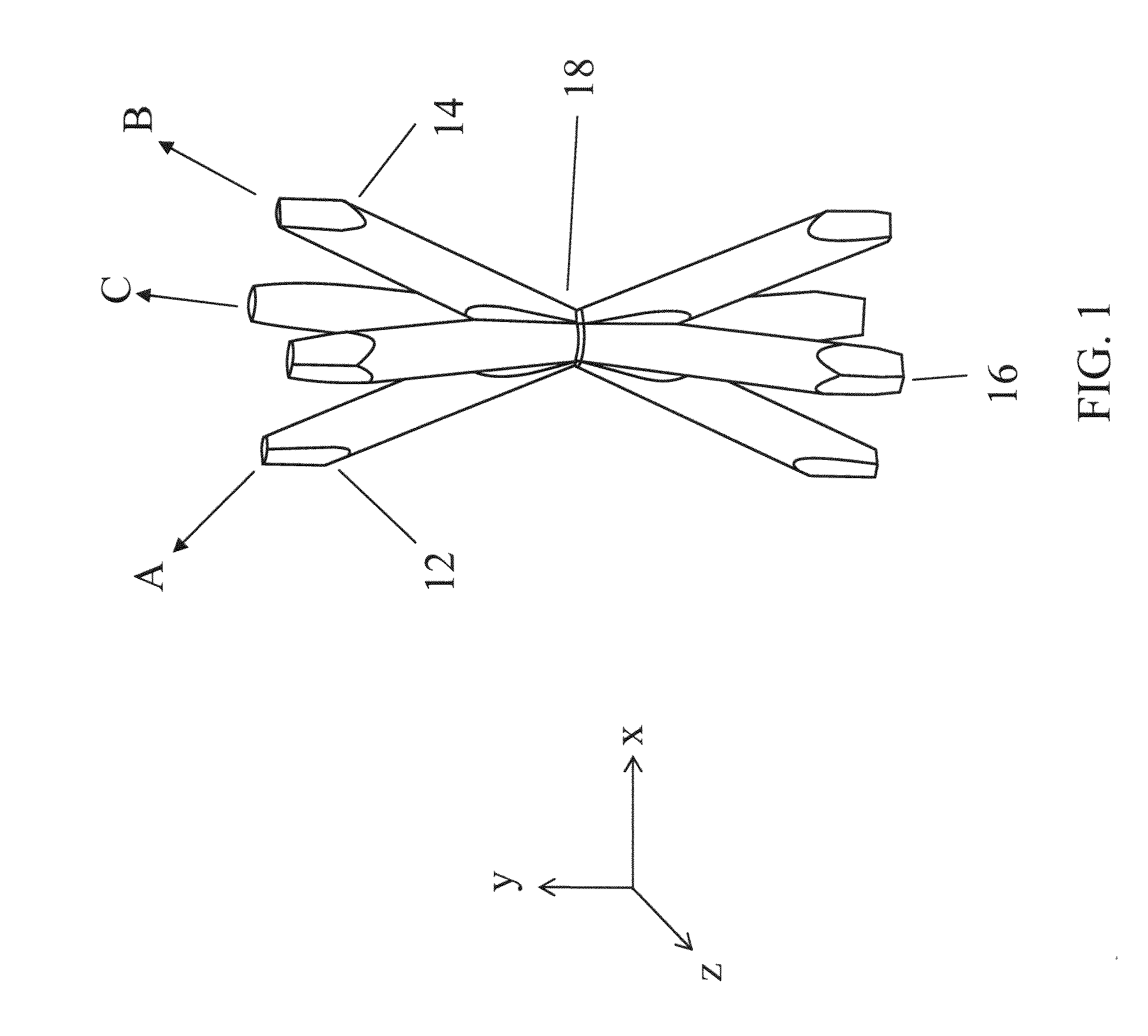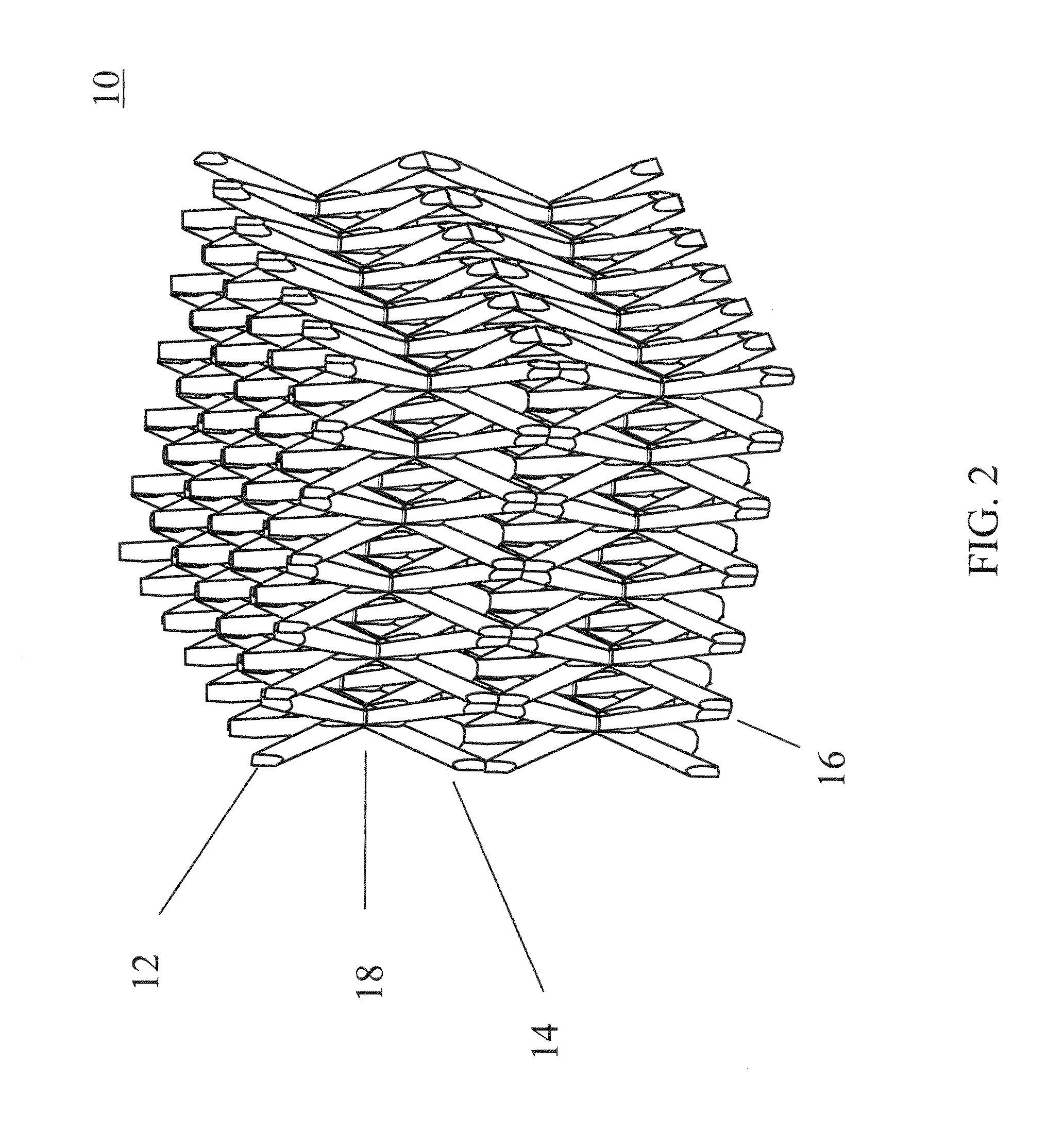Composite structures for storing thermal energy
a composite structure and thermal energy technology, applied in indirect heat exchangers, lighting and heating apparatuses, instruments, etc., can solve the problems of affecting the structure of the vehicle or component in which it is integrated, affecting the performance of the vehicle, and affecting the performance of the componen
- Summary
- Abstract
- Description
- Claims
- Application Information
AI Technical Summary
Benefits of technology
Problems solved by technology
Method used
Image
Examples
example 1
[0083]1. A 0.142 g section of a polymer scaffold was weighed out.
[0084]2. Capric acid (also known as decanoic acid) is placed in a small Petri dish and heated to 40° C. until melted.
[0085]3. The polymer scaffold is submerged in the molten capric acid until it is fully filled. Then it is removed and placed on a weighing dish to dry.
[0086]4. Any extra capric acid is scraped away with a razor blade.
[0087]After incorporation, the composite had a mass of 0.880 g, corresponding to a material that is 84% by mass capric acid. Since the heated polymer has a density of 1.26 g / cm3 and capric acid has a density of 0.893 g / cm3, this corresponds to a scaffold that is 88 vol % capric acid and 16 vol % polymer scaffold. Top and side views of this composite are shown in FIGS. 10a and 10b, respectively.
[0088]The images in FIGS. 10a and 10b show a well-filled composite material. Here, the side view in FIG. 10b shows a vertical cut through the material, which is why a hexagonal pattern of scaffold rods...
example 2
[0091]1. 0.080 g of a rigid graphite scaffold is weighed out
[0092]2. Capric acid (also known as decanoic acid) is placed in a small Petri dish and heated to 40° C. until melted.
[0093]3. The polymer scaffold is submerged in the molten capric acid until it is fully filled. Then it is removed and placed on a weighing dish to dry.
[0094]4. Any extra capric acid is scraped away with a razor blade.
[0095]After incorporation, the composite had a mass of 0.141 g, corresponding to a material that is 43% by mass capric acid. Since graphite has a density of 2.2 g / cm3 and capric acid has a density of 0.893 g / cm3, this corresponds to a scaffold that is 65 vol % capric acid and 35 vol % polymer scaffold. Top and side views of this composite are shown in FIGS. 12a and 12b, respectively.
[0096]The images in FIGS. 12a and 12b show a well-filled composite material. Here, the side view in FIG. 12b shows a vertical cut through the material, which is why the crosshatch pattern of the scaffold is observed.
[...
example 3
[0099]1. A polymer scaffold and paraffin wax are placed in a vacuum bag.
[0100]2. The bag is heated to 65° C. to melt the paraffin wax, and vacuum is applied to pull the paraffin through the scaffold structure.
[0101]If a scaffold with 90% of its volume being free space is used and it fills completely with wax, this composite will absorb 137 J / g of heat as a result of the paraffin wax melting.
PUM
 Login to View More
Login to View More Abstract
Description
Claims
Application Information
 Login to View More
Login to View More - R&D
- Intellectual Property
- Life Sciences
- Materials
- Tech Scout
- Unparalleled Data Quality
- Higher Quality Content
- 60% Fewer Hallucinations
Browse by: Latest US Patents, China's latest patents, Technical Efficacy Thesaurus, Application Domain, Technology Topic, Popular Technical Reports.
© 2025 PatSnap. All rights reserved.Legal|Privacy policy|Modern Slavery Act Transparency Statement|Sitemap|About US| Contact US: help@patsnap.com



